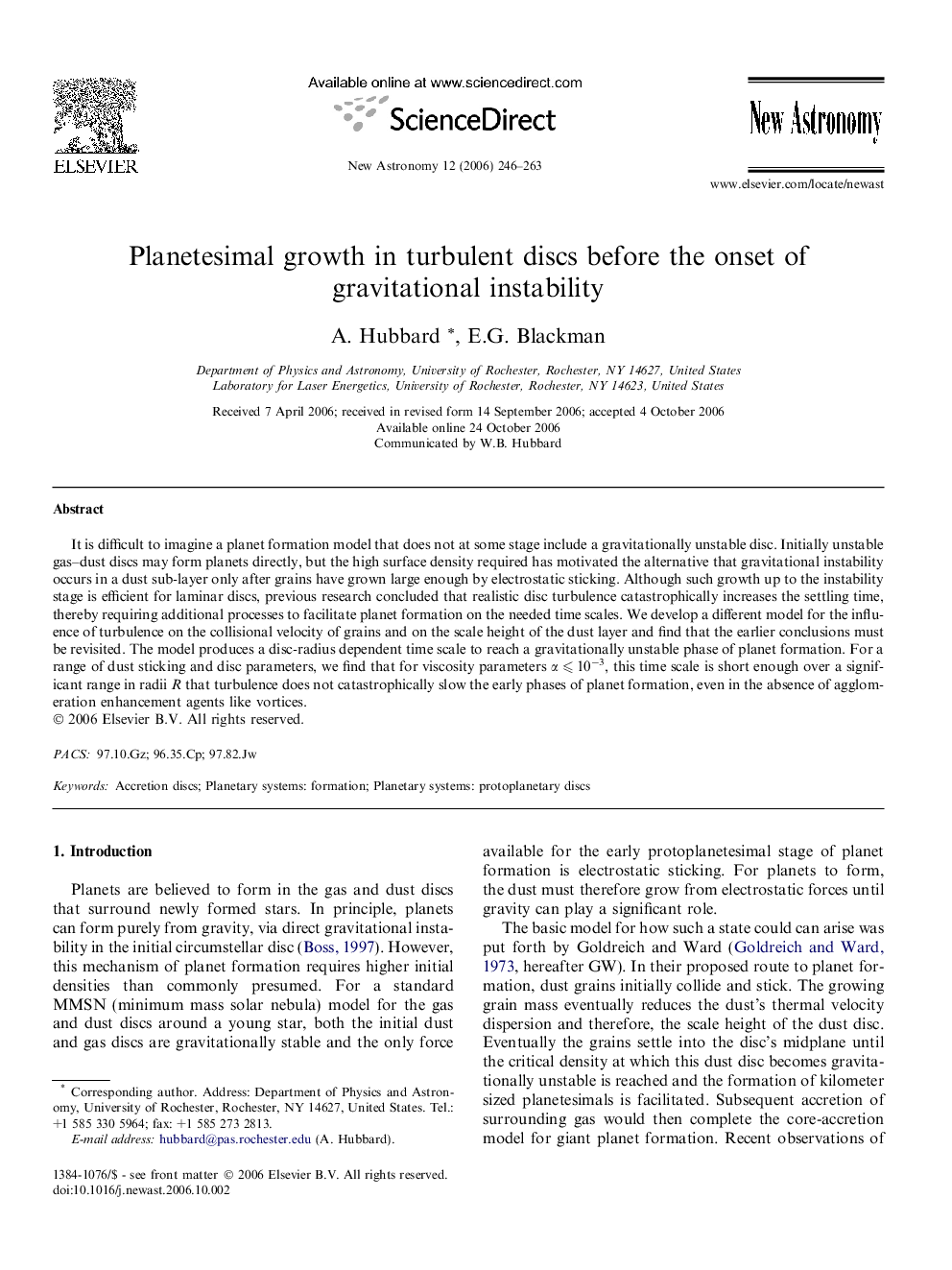| Article ID | Journal | Published Year | Pages | File Type |
|---|---|---|---|---|
| 1779456 | New Astronomy | 2006 | 18 Pages |
Abstract
It is difficult to imagine a planet formation model that does not at some stage include a gravitationally unstable disc. Initially unstable gas-dust discs may form planets directly, but the high surface density required has motivated the alternative that gravitational instability occurs in a dust sub-layer only after grains have grown large enough by electrostatic sticking. Although such growth up to the instability stage is efficient for laminar discs, previous research concluded that realistic disc turbulence catastrophically increases the settling time, thereby requiring additional processes to facilitate planet formation on the needed time scales. We develop a different model for the influence of turbulence on the collisional velocity of grains and on the scale height of the dust layer and find that the earlier conclusions must be revisited. The model produces a disc-radius dependent time scale to reach a gravitationally unstable phase of planet formation. For a range of dust sticking and disc parameters, we find that for viscosity parameters α ⩽ 10â3, this time scale is short enough over a significant range in radii R that turbulence does not catastrophically slow the early phases of planet formation, even in the absence of agglomeration enhancement agents like vortices.
Related Topics
Physical Sciences and Engineering
Physics and Astronomy
Astronomy and Astrophysics
Authors
A. Hubbard, E.G. Blackman,
